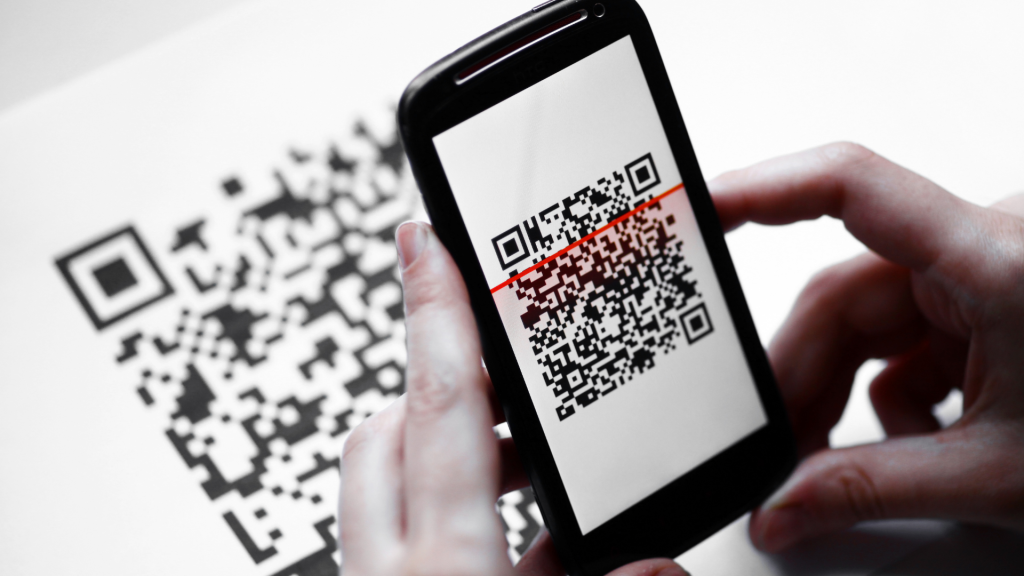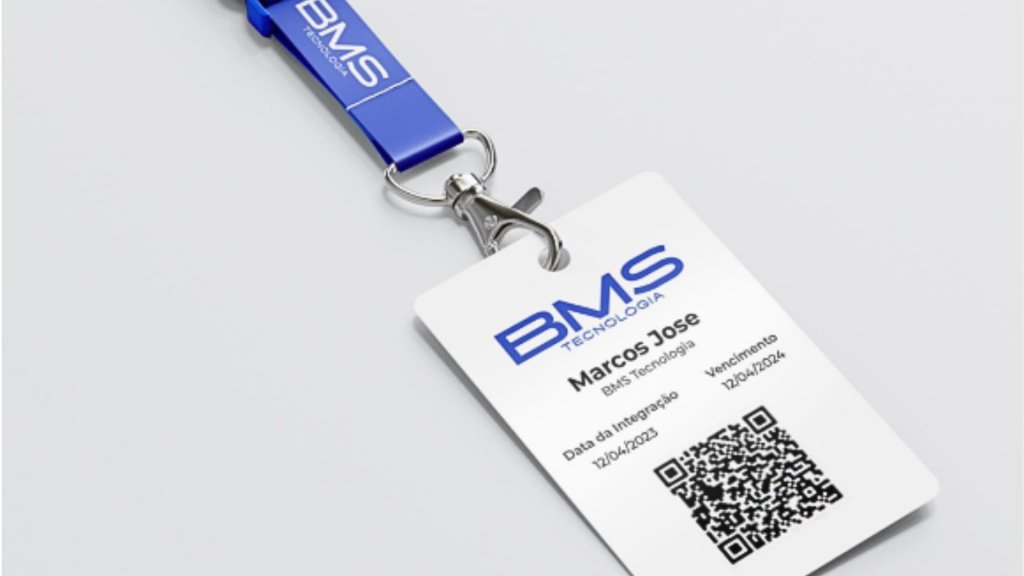Discover how QR Codes are transforming third-party management, simplifying access control and increasing the security and efficiency of business operations.
Third-party risk management plays a crucial role in ensuring the security and efficiency of business operations in an increasingly complex and interconnected corporate landscape.
As companies collaborate with a diverse spectrum of external partners, including suppliers, service providers and third-party contractors, exposure to potential risks expands considerably.
These risks range from security and compliance issues to the need to ensure accurate identification and appropriate authorization for access to company facilities.
In this context, QR Code technology has emerged as an innovative tool that has transformed companies' approach to third-party risk management, particularly with regard to controlling physical access to business facilities.
In this article, we will explore in detail how QR Codes are optimizing third-party risk management in the context of controlling physical access to companies.
We will look at how these codes function as an integral part of ID badges and how they are being used to solve complex challenges associated with third-party management.
Additionally, we will examine how integrating QR Codes into access badges not only simplifies the entry process, but also contributes to regulatory compliance, incident reduction, and improved traceability.
In this article we will cover:
- Fundamentals of QR Codes
- How QR Codes Solve Complex Challenges in Third Party Management
- Practical Steps for Implementing QR Codes in Third-Party Risk Management
- BMS Integration: Transforming Third Party Management

Fundamentals of QR Codes
QR Codes, or Quick Response Codes, play an essential role in optimizing third-party risk management, especially in the context of controlling physical access to business facilities.
Unlike traditional barcodes, which store information linearly, QR Codes are composed of a matrix of dots, allowing them to contain a significantly greater amount of data. This characteristic makes QR Codes ideal for storing a wide range of documents and information, however, the amount of data that a QR Code can store depends on its density, that is, the number of modules it contains.
In the context of third-party management, QR Codes play a fundamental role in risk management, allowing quick access to a variety of relevant documents and information. This not only optimizes time, but also ensures greater compliance with activities, contributing to the efficiency and safety of business operations.
Read too: How to Manage Documents in your Service Company
How QR Codes Solve Complex Challenges in Third Party Management
Including QR Codes on identification badges is a relatively simple but highly functional practice.
Generally, the QR Code is printed on the badge itself, along with the outsourced employee's identification information, such as name and position.
This code can be easily scanned by devices such as smartphones or QR Code readers installed on the access doors to the facilities.
Check out the main benefits that including the QR Code in access badges can provide your company:
Authorized access:
Contract employees can access company facilities by scanning their QR Code ID badge at designated entrances. This allows precise and authorized control of who can enter and when, in addition to reducing the time spent authorizing the entry of these employees.
Time Monitoring:
QR Codes can be used to clock in and out of contract employees, providing an accurate record of their working hours.
Document Validation:
In addition to identifying information, QR Codes can contain details about the validity of specific certifications or documents required to perform outsourced tasks.
Temporary Access Control:
QR Codes can be generated to provide temporary access to specific areas of the facility, further reducing the risks of unauthorized access.
Reading QR Codes is quick and easy, speeding up the process of entering and leaving the facilities.
Enhanced Security:
QR Codes offer an additional level of security as they are difficult to forge and can be updated regularly to prevent unauthorized access.
Traceability:
Reading the QR Codes generates entry and exit records, creating a traceable history of the activities of outsourced employees. Not to mention that traceability also allows you to check the history of document postings, making it possible to check when they were posted and by whom.
Conformity:
QR Code technology allows immediate verification of outsourced employee compliance, ensuring that they meet the necessary requirements for their tasks.
Error Reduction:
The automation provided by QR Codes reduces human errors associated with manual information entry.
Read too: Lack of visibility and control in the management of outsourced labor

Practical Steps for Implementing QR Codes in Third-Party Risk Management
Now that we've explored the benefits that QR Codes bring to the workplace, let's look at some guidelines your organization can follow to successfully implement this technology. This will ensure successful integration and contribute to more effective and secure third-party management.
- 1. Needs Assessment: Start by performing a comprehensive assessment of your organization's third-party risk management needs. This involves identifying the specific challenges that QR Codes can solve.
- 2. Platform Selection: Choose a platform or system that supports generating, printing and reading QR Codes easily and securely. Make sure it is scalable to meet future needs.
- 3. Integration with Existing Systems: Ensure that QR Code technology can be efficiently integrated with physical access control systems already in use in your organization.
- 4. Badge Design: Develop a badge design that includes the QR Code clearly and legibly, along with the outsourced employee's identification information.
- 5. Personnel Training: Make sure that the team responsible for third-party management is properly trained in reading and checking QR Codes and understands the associated procedures.
- 6. Effective Communication: Clearly communicate to outsourced employees the use of QR Codes on identification badges and associated procedures. Make sure they are aware of the importance of compliance.
- 7. Data Security: Ensure that information stored in QR Codes is protected from unauthorized access and that all practices comply with data privacy regulations.

BMS Integration: Transforming Third Party Management
In its search for effective third-party management, BMS Tecnologia presents the BMS Integração, a comprehensive solution that goes beyond simply creating badges with QR Codes.
We developed our platform to simplify and improve third-party management, offering a series of crucial benefits for companies dealing with external partners.
Check out some of the features of our system below:
Smart Badges with QR Codes
Our badges with QR Codes are not just visual identification, they are a powerful tool that optimizes outsourced employees' access to company facilities.
With a simple scan, it is possible to authorize entry accurately and quickly, substantially reducing the time spent in this process.
Furthermore, these QR Codes contain comprehensive information, allowing all documents related to the outsourced employee to be accessed instantly if necessary.
This not only increases operational efficiency, but also contributes to regulatory compliance and incident reduction.
Document Centralization and Smart Alerts
O BMS Integração It further simplifies third-party management by centralizing all essential documents in one place.
You can manage documentation for multiple companies you serve, all in a single program. This not only simplifies organization, but also facilitates access, savings
Our platform also eliminates worries about overdue documents through smart alerts.
O BMS Integração issues alerts for documents about to expire, avoiding legal risks arising from employees working without appropriate training
Shared System and Rapid Employee Release
An exceptional feature of BMS Integração is the ability to facilitate collaboration with contracting companies.
Share your system securely, allowing your customers to access all service-related documentation, including your own company's documentation.
And the best: no additional costs for your customers!
Thanks to the generated link, hiring companies can quickly confirm employee documentation, ensuring the appropriate assignment to the role.
This considerably speeds up the process of releasing employees to provide services.
Request a Demo
O BMS Integração It is more than a simple tool, it is a partner in the excellence of third-party management.
If you are looking for a complete solution that improves compliance, increases security and optimizes operational efficiency, we invite you to request a free demo of BMS Integração.
Discover how our platform can transform your third-party management and prepare it for a more effective and secure future.
Click on the banner below and schedule an appointment so we can better explain everything that BMS Integração can do for your company.

















